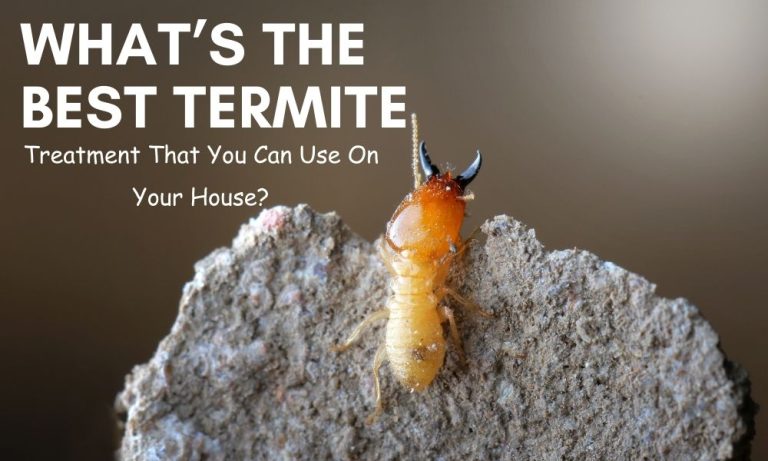Termites are a very common pest in the United States; they feed on wood, causing damage to the termite treatment of your home. There are many types of termite treatments that you can use, but there are also other factors to consider when choosing which type is best for you and your family. Let’s take a look at the best termite treatment options that you have!
What Is A Termite Treatment?
A termite treatment is a home remedy for the control of subterranean termites. Termites are tiny, yellow-brown insects that live in colonies of between 10 and 30 individuals. Colonies can be found in wood or soil, and feed on wood and other organic materials.
Professional Termite Control Services is important because it can cause extensive damage to homes if left unchecked. Damage may include:
-Nests being knocked down
-Wood being eaten away
-Walls and ceilings being damaged
-Stairs becoming unsteady
There are several types of termite treatments available, but the most common is the use of baiting stations. A baiting station contains food that the termites will eat, but it also has a chemical that will kill the termites should they attempt to eat it. In most cases, you will need to treat at least two baiting stations per colony.
At What Temperature Should Termite Treatments Be?
Are you looking for a pesticide that will work effectively on your house’s termites, but also won’t cause any damage to your home? Here are three tips for selecting the best treatment for your needs.
The first step is to determine the temperature at which termites are most active. Most treatments work best at temperatures between 50 and 85 degrees Fahrenheit. If the temperature outside is cooler or warmer than these ranges, it may be necessary to adjust the treatment schedule.
The second factor to consider is how much moisture the termites are accustomed to living in. Many treatments work best when applied in dry conditions, but if there is water present on the property, it may need to be dried out before applying the pesticide.
Finally, choose a treatment that has been specifically designed for use on termites. There are many different brands and types of termite treatments available, so it’s important to research which one is right for your home.
Necessary Ingredients For The Termite Treatment
There are many different termiticides and treatments that homeowners can use on their properties to rid themselves of pests like termites. Here are some of the most important ingredients for a successful termite treatment:
-Diatomaceous earth (DE) is a natural substance that was used as a water filter in the past. When termites come into contact with it, they become dehydrated and die. DE is often used as a component in termite treatments because it’s non-toxic, non-flammable, and doesn’t leave any residues behind.
-Cismontane is another ingredient used in termite treatments. It’s made from the crushed remains of subterranean plant life and has been shown to kill termites on contact.
-Termidor SC is a popular termite treatment that uses an insecticide to kill pests.
-Pyrethrum is also an effective termite treatment. It’s made from the flowers of the Chrysanthemum cineraria folium plant and contains pyrethrin, which is a naturally occurring insecticide.
A Quick, Step By Step Guide To The Termite Treatment Process
When it comes to pest control services, one of the most common pests that homeowners face is termites. Even in warm climates, termites can cause damage to homes if not properly treated. The good news is that there is a variety of treatments available that can be used to remove these pests from your home. In this article, we will provide a quick guide on how to rid your home of termites using the most effective methods.
There are three main types of termite treatments: baiting, fumigation, and underground barrier treatment.
Baiting involves placing food items near the entrance of the termite nest so that the insects will eat them and bring back food to their colony. This method is generally the least effective because termites are smart enough to avoid traps that are baited this way.
Fumigation uses high-pressure sprays or vaporized gas to kill all the termites inside the house. This method is more effective than baiting but can also be more expensive.
Underground barrier treatment uses a series of pipes laid beneath the ground surface around the entire property. The pipes contain chemicals that kill all the termites on contact, as well as any eggs or young.

